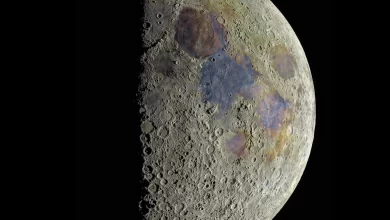New photos from the Webb Space Telescope

The US National Aeronautics and Space Administration NASA has released a photo gallery of more than a dozen images of galaxies taken by the James Webb Space Telescope.
Scientists say that analyzing the new images could provide important insights into how galaxies build, sustain and terminate star formation.
NASA has released a treasure trove of more than a dozen images of galaxies taken by the James Webb Space Telescope. The photos reveal the structure and formation of these cosmic beings in “mind-blowing” new detail.
The new set of images reveals the stars, gas and cosmic dust that make up 19 nearby galaxies in exquisite detail that could enable researchers to uncover the origins of these complex structures.
Previously, astronomers have imaged such spiral galaxies in wavelengths ranging from radio to ultraviolet light using space- and ground-based telescopes, with the galaxies visible directly opposite from Earth.
Now, using the Webb telescope, scientists have obtained the highest resolution images of these galaxies ever taken at near and mid-infrared wavelengths.
Janice Lee, project scientist at the Space Telescope Science Institute in Baltimore, said, “Webb’s new photos are extraordinary. They are mind-blowing even for researchers who have been studying the same galaxies for decades.”
The bubble-like and filamentary structures that are part of the galaxy are resolved in the new photos down to the smallest scales ever observed, telling a story about the star formation cycle, researchers say.
“I feel our team is living in a state of constant amazement (in a positive sense) at the amount of detail in these images,” said postdoctoral researcher Thomas Williams of the University of Oxford in the UK.
The photos, taken by Webb’s Near Infrared Camera (NIRCam), captured millions of stars that are part of the spiral arms of galaxies in exquisite detail, shimmering in shades of blue.
Some of the stars can be seen scattered along the spiral arms, while others are more tightly packed together in star clusters.
Data from the telescope’s Mid-Infrared Instrument (MIRI) revealed dust glowing in the space around and between the stars, and also showed stars that have not yet fully formed.

“These are the places where we can find the newest, most massive stars in galaxies,” said Erik Rosolowsky, professor of physics at the University of Alberta in Canada.
These cosmic structures are particularly visible in the photograph of the barred spiral galaxy NGC 1300, located about 69 million light-years from Earth in the constellation Eridanus.
The images, taken by the most powerful telescope ever launched into space, also show large, spherical shells in the gas and dust that researchers believe were likely created by stars exploding and blowing giant holes in space.
Scientists say studying the new images could provide important insights into how galaxies build, sustain and terminate star formation.
“Stars can live for billions or trillions of years,” said Adam Leroy, professor of astronomy at Ohio State University. By fully cataloging all types of stars, we can create a more reliable and holistic view of their life cycles,” says Adam Leroy, professor of astronomy at Ohio State University.






